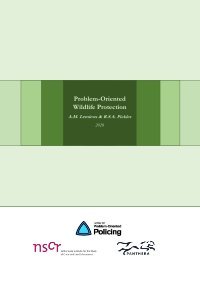By A.M. Lemieux & R.S.A. Pickles
As an officer for a national wildlife authority, you may experience déjà vu. You arrest poacher after poacher but the poaching threat in your park is not decreasing. You get called out to deal with crop raiding animals, but despite culling and translocation, each year there are more callouts. You are probably not alone in thinking ‘if we had more patrol teams…or faster response vehicles…or more money for operations, we could solve our problems’. Instead you have a restricted budget and the public expect you to deal with a broad range of wildlife problems, some of which use a lot of time and resources but do not seem to change. What’s more, you’re probably aware many wildlife protection problems are getting worse. Poaching and trafficking of wildlife for pets, food, ornaments or medicine is increasing across the world. There’s also more conflict between wildlife and people as they compete with one another for land and resources. Many of the problems you’ll be asked to solve are complex and you might find your organization’s traditional approaches need updating. It’s time to try something new. Problem-oriented policing was developed to help police officers find ways of reducing crime without substantial additional resources. A problem-oriented approach (a) supports ground-up initiatives addressing the context of a specific problem, (b) encourages innovative solutions beyond the criminal justice system, and (c) promotes collaboration within and beyond your agency. We think this approach has a lot to offer wildlife authorities and can be integrated with ongoing conservation strategies
Phoenix, AZ: Center for Problem-Oriented Policing, Arizona State University, 2020. 31p.



